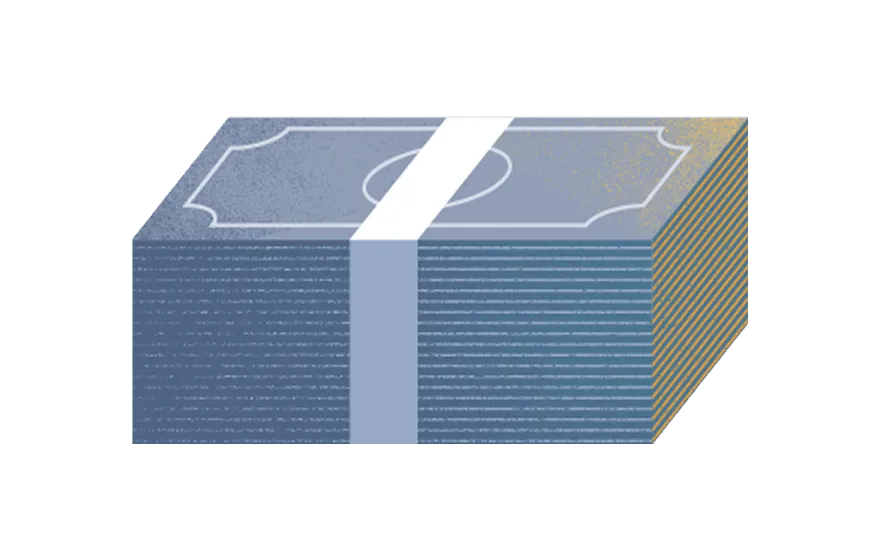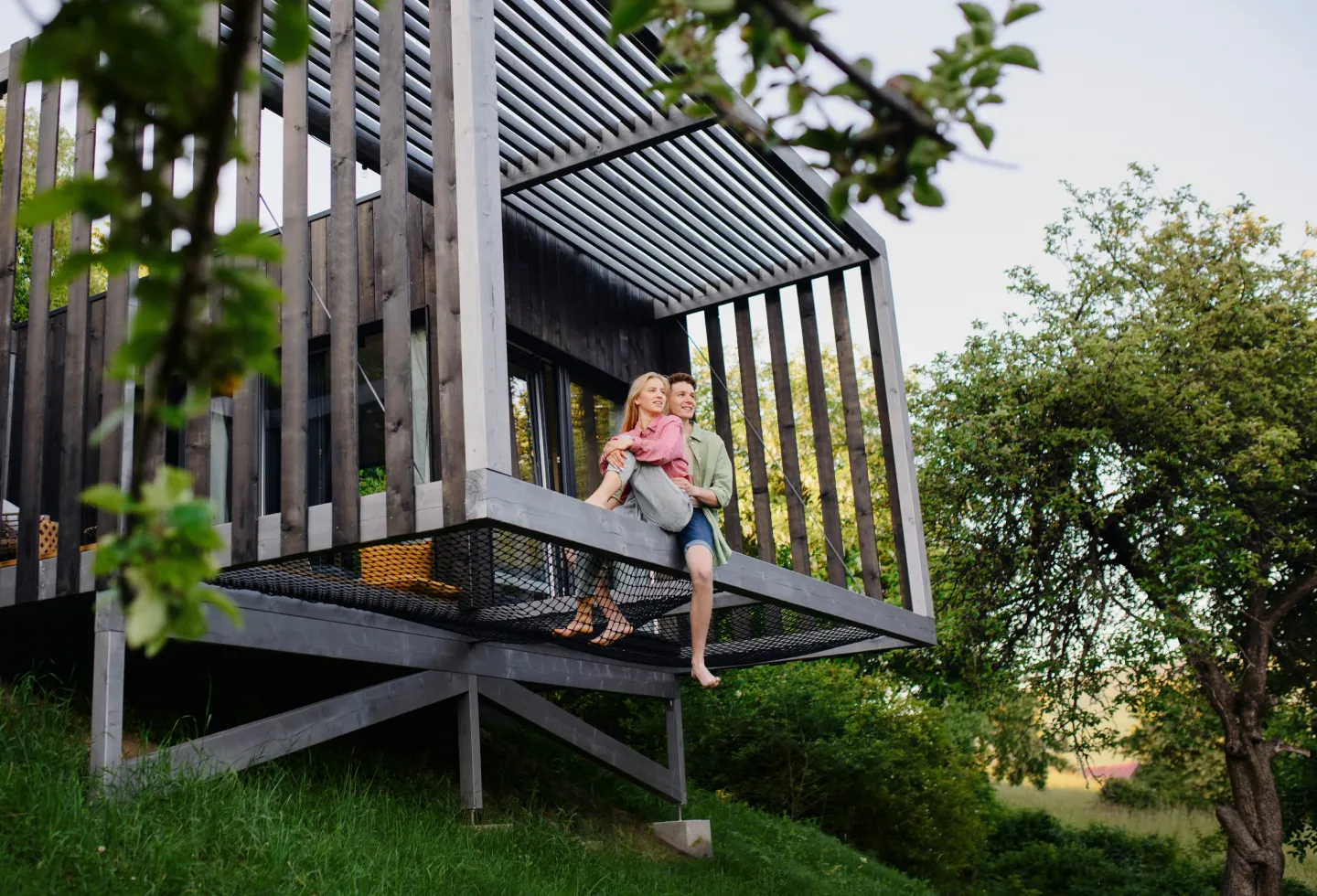Tiny homes are exploding in popularity in response to growing economic and environmental concerns around the country.
There’s good reason, too: tiny homes are more customizable, affordable, and energy-efficient than traditional homes. They can be adapted to a wide range of purposes, from weekend camping to long-term rentals or accommodating aging family members.
That adaptability poses a challenge, though. Tiny homes still aren’t cheap, per se, costing anywhere from $10,000 to $100,000. Traditional mortgage lenders are also hesitant to extend credit for a tiny home purchase. If you know where to look, though, it’s still possible.
Can you get a traditional mortgage for a tiny home?
Generally, no. Tiny homes aren’t as secure an investment as a regular home, and that makes lenders hesitant to offer mortgages for a tiny home purchase.
Homes on wheels can be moved, for example. Many tiny homes are built by their owners, who often lack professional building experience. The resale market is unclear, and the industry often can’t even agree on whether certain tiny homes should be classified as a house, a mobile home, or an RV. Most lenders require your home to be 400 square feet or more to qualify for a mortgage. The list of reasons goes on.

Tiny home financing and loan options
A mortgage may be out the window when it comes to tiny house financing, but that doesn’t mean you can’t complete the financing process with any number of other options.
RV loan
- Typical cost: 8% to 16%
- Typical term lengths: 10 to 20 years
- Example monthly payment for a $50,000 tiny home loan: $600 for a 15-year loan at 12% APR
If your tiny home has wheels and meets other requirements, it’s often possible to use an RV loan to pay for your house.
This is a type of secured loan, which means that you’re using the tiny home itself as collateral for the loan in case you default on your repayment. In exchange, you’ll get lower interest rates than an unsecured option, and you may be able to get longer terms, too. Those factors can help keep your monthly payments low.
Contractor or builder loan
Many tiny home manufacturers and sellers partner directly with lenders to offer financing. They have a vested interest in helping customers find financing, after all, so that they can sell more tiny homes.
This means you could be paired up with any number of options already on this list, and the corresponding interest rate and fees can vary. It’s handy knowing that you have an easier route for financing, but it’s still up to you to do the legwork and make sure you’re not overpaying for your tiny house loan.
Personal loan
- Typical cost: 12.02%
- Typical term lengths: 1 to 10 years
- Example monthly payment for a $50,000 tiny home loan: $718 for a 10-year loan
If your tiny home doesn’t count as an RV and you don’t have an existing house that you can tap into for home equity financing, you’ll generally need to rely on a personal loan. These are unsecured, meaning that there’s no collateral that a lender can take back in case you don’t repay the money. Rather, your rates and terms are based on your credit score, income, and general creditworthiness.
Personal loans are a better fit for smaller and less elaborate tiny homes, since you’re generally more restricted in how much you can borrow and how long you can take to pay it back.
Home equity loan or line of credit (HELOC)
- Typical cost: 8.05%, plus closing costs ranging from 2% to 5%
- Typical term lengths: 5 to 30 years
- Example monthly payment for a $50,000 tiny home loan: $638 for a 10-year loan
If you’re a homeowner, you may be able to tap into your home equity to help you pay for a tiny home. The downside is that, if you default, your lender can foreclose on your home — your main home, that is. However, in return, you’ll get lower rates, larger loan amounts, and longer term lengths. Typically, you’ll need at least 20% equity in your home to qualify.
A home equity loan is a perfect fit for a tiny home purchase, since it’s a large, one-time expense that you can repay at a fixed and stable interest rate. Conversely, if you’re building a tiny home from scratch, a home equity line of credit might be more appropriate, since tiny home building projects frequently go over budget and past schedule. A HELOC allows you the flexibility to roll with those punches.
Home equity investment (HEI)
- Typical cost: 3.9% processing fee, plus other closing costs and a share of your main home’s future equity appreciation.
- Typical term lengths: 30 years
- Example monthly payment for a $50,000 tiny home loan: $0
If you can’t afford to make payments right now on your tiny home, a potential option is a home equity investment. It’s attached to your main home, as per a home equity loan or HELOC, but you repay it in 30 years as a lump sum along with a share of your primary home’s future appreciation.
Not having to make any payments can relieve you of a lot of stress right now so that you can focus on building or purchasing your tiny home.
Considerations before financing a tiny home
The financing piece is just one part of the puzzle when it comes to the costs of tiny homes. Don’t forget about these expenses when setting up your budget, either:
- Insurance: Tiny home insurance isn’t currently standardized, unlike traditional home insurance. Costs can vary a lot depending on the specific policy you’re eligible for. It’s worth paying for, though, since tiny homes can be more vulnerable to loss.
- Little to no ROI: Homes generally appreciate in value, but that isn’t always true for tiny homes — especially those on wheels. In fact, it’s more common for them to depreciate over time, similar to an RV. It’s not as much of a wealth-building tool, and you’re not guaranteed to get those costs back.
- Zoning restrictions: Not all residential areas allow tiny homes, and if they do, they may set limits and requirements on your tiny home for it to remain legal. This can increase your compliance costs or push you out of certain areas entirely.
- Land considerations: You’ll need a place to keep your tiny home, whether that’s on your existing property, by taking out a land loan, or paying rent or lot fees to someone else. Don’t forget about the cost of hooking up utilities, too, along with ongoing utility bills.
- Vehicle considerations: If your tiny home has wheels, you’ll need a vehicle capable of towing a large, heavy load if you want the freedom to move at will. That may mean an additional loan for a larger vehicle, if you don’t already have one. Alternatively, you’ll need to rent or hire a vehicle if you need to move your home.

Final thoughts
You’ll need to get creative when planning your tiny home financing. That’s the sacrifice you make for affordable housing, after all; a more scattershot approach to financing.
However, that’s not all bad news. Even though tiny home loans are more variable, that opens more opportunities to find the right financing for you. Rather than a one-size-fits-all debt like a mortgage, you can choose from several different financing options to pay for your next abode.
Let your home equity work for you. See how much you can get with a Home Equity Investment from Point.
No income? No problem. Get a home equity solution that works for more people.
Prequalify in 60 seconds with no need for perfect credit.
Show me my offer
Frequently asked questions

Thank you for subscribing!
.webp)















